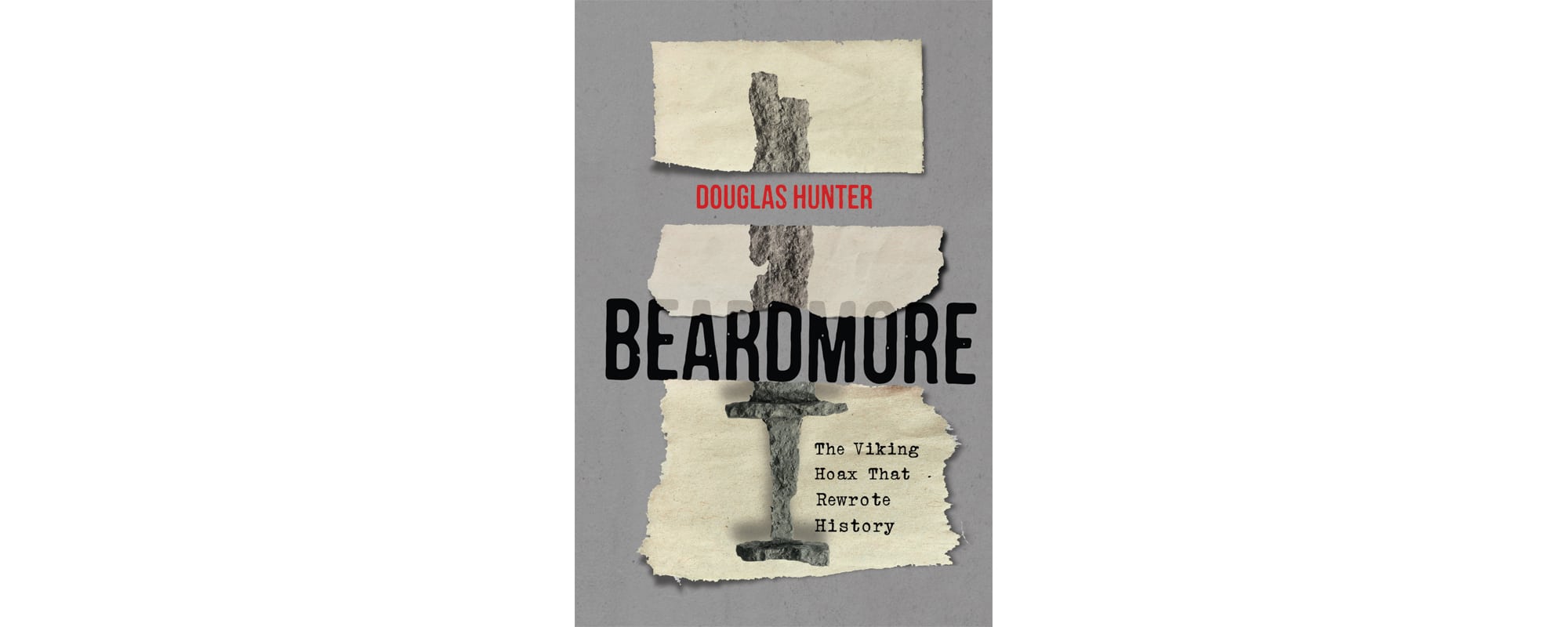 In 1936, Toronto’s Royal Ontario Museum purchased 10th-century Norse relics from Eddy Dodd, a prospector who said he’d uncovered them on his mining plot in Beardmore, Ontario. The relics were displayed in the museum as proof of Vikings having been in the northern part of the province. By 1982, the ROM had dropped all mention of where the relics were found from their display and, to this day, they are described simply as examples of Norse weaponry.
In 1936, Toronto’s Royal Ontario Museum purchased 10th-century Norse relics from Eddy Dodd, a prospector who said he’d uncovered them on his mining plot in Beardmore, Ontario. The relics were displayed in the museum as proof of Vikings having been in the northern part of the province. By 1982, the ROM had dropped all mention of where the relics were found from their display and, to this day, they are described simply as examples of Norse weaponry.
That is the short story of the Beardmore relics. The full story, including what happened in the 50 intervening years, is recounted in Douglas Hunter’s new book on the subject. Like a good mystery writer, Hunter painstakingly examines each piece of evidence, much of which engendered both massive hype and serious controversy.
Every part of this story is complicated, and every person involved seems to have been incapable of telling the whole truth or any part of the truth at all. For example, Dodd variously claimed he found the relics in 1933, 1931, and 1930, depending on who was listening and what they wanted to hear. Despite this glaring inconsistency, a remarkable number of people – including C.T. Currelly, the director of the ROM at the time – ignored common sense or actively withheld information confirming a possible hoax in favour of promoting what the relics represented: the possibility that Vikings came to North America long before other Europeans.
Meanwhile, Teddy Elliott, a schoolteacher who first brought the relics to the ROM’s attention, had begun to realize how troublesome Dodd’s story was. After examining the evidence and re-interviewing interested parties, Elliott came to believe a convincing alternative origin story for the relics. This version included a Norwegian immigrant smuggling the pieces into Canada and giving them to someone as surety on a loan, after which the relics followed a convoluted path to Dodd’s hands.
Elliott slowly gathered supporters of his theory that a hoax had been perpetrated on the ROM, including some who had originally been fervent believers in Dodd and his assertions. The twists and turns in the story are almost unbelievable. Even though Hunter does a wonderful job of sorting out the confusion, putting all the evidence together in a way that wasn’t possible for any of the principals at the time, he is still unable to provide a definitive answer as to how the relics got to Beardmore. That said, it seems unlikely that anyone could support Dodd’s claim after reading Hunter’s account.
What makes Beardmore truly intriguing is Hunter’s focus on big-picture issues, including toxically deferential academia and the history of museum culture. Hunter describes his focus as being on “the history of history, or of the ideas in history” – Beardmore is a testament to how that approach, together with a factual retelling of events, can make for a richer reading experience. For every piece of evidence gathered, Hunter includes an explanation of why it might have been taken seriously at the time, which is critical when many of the key decisions seem otherwise so absurd.
Beardmore concludes with a summation of some recurring themes: the need for transparency in scholarship, the way powerful people often hold on to power by refusing to answer questions, and the strong undercurrent of classicism in early 20th century Canada. Hunter has written an excellent book that is engrossing from beginning to end, while also engaging with critical issues that were in play at a time in which Canadian history was very nearly rewritten.
 Contact us via email
Contact us via email

